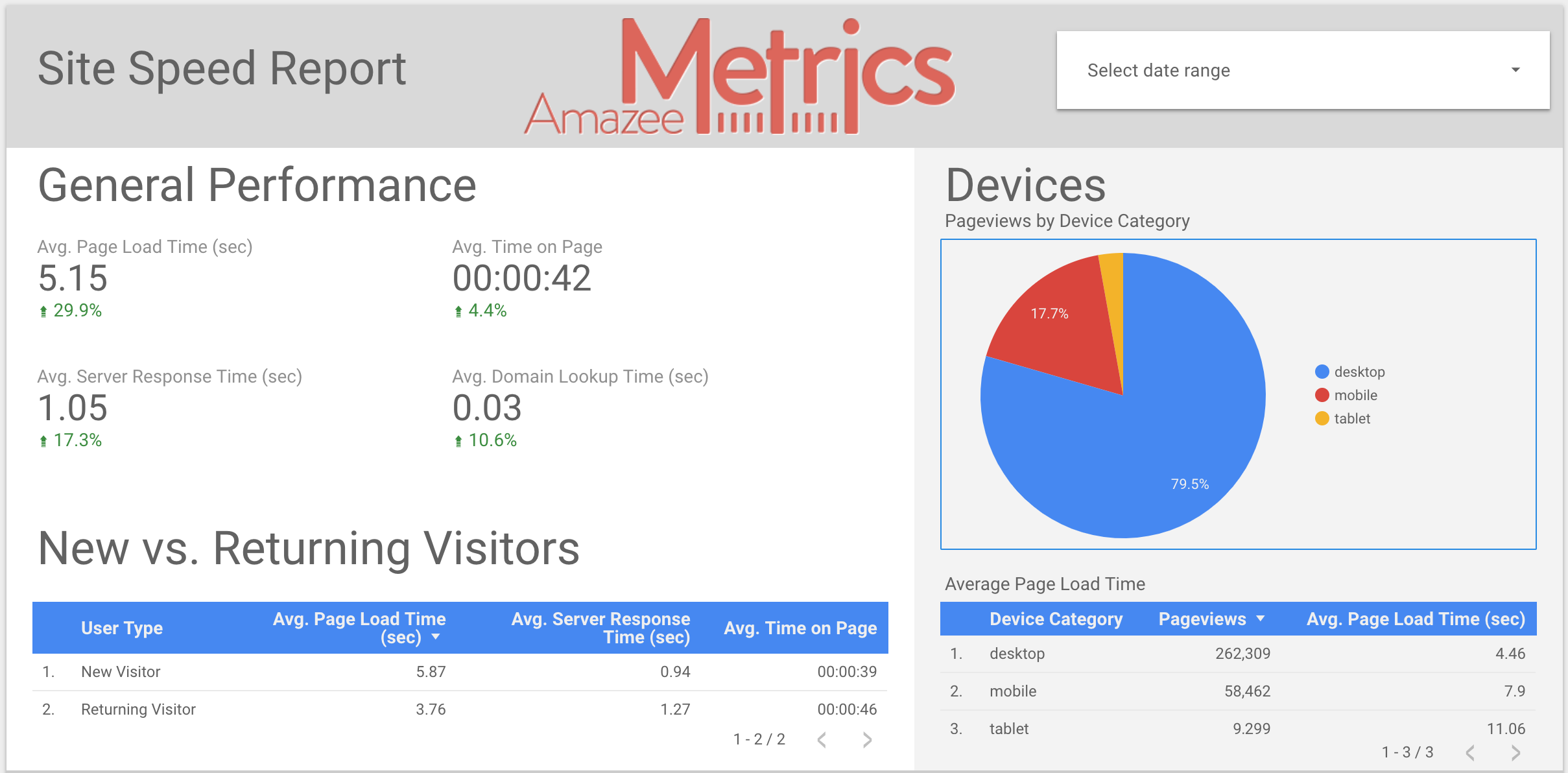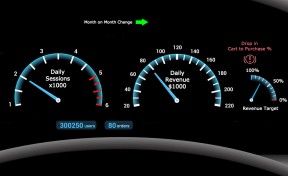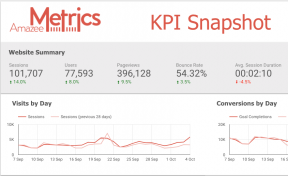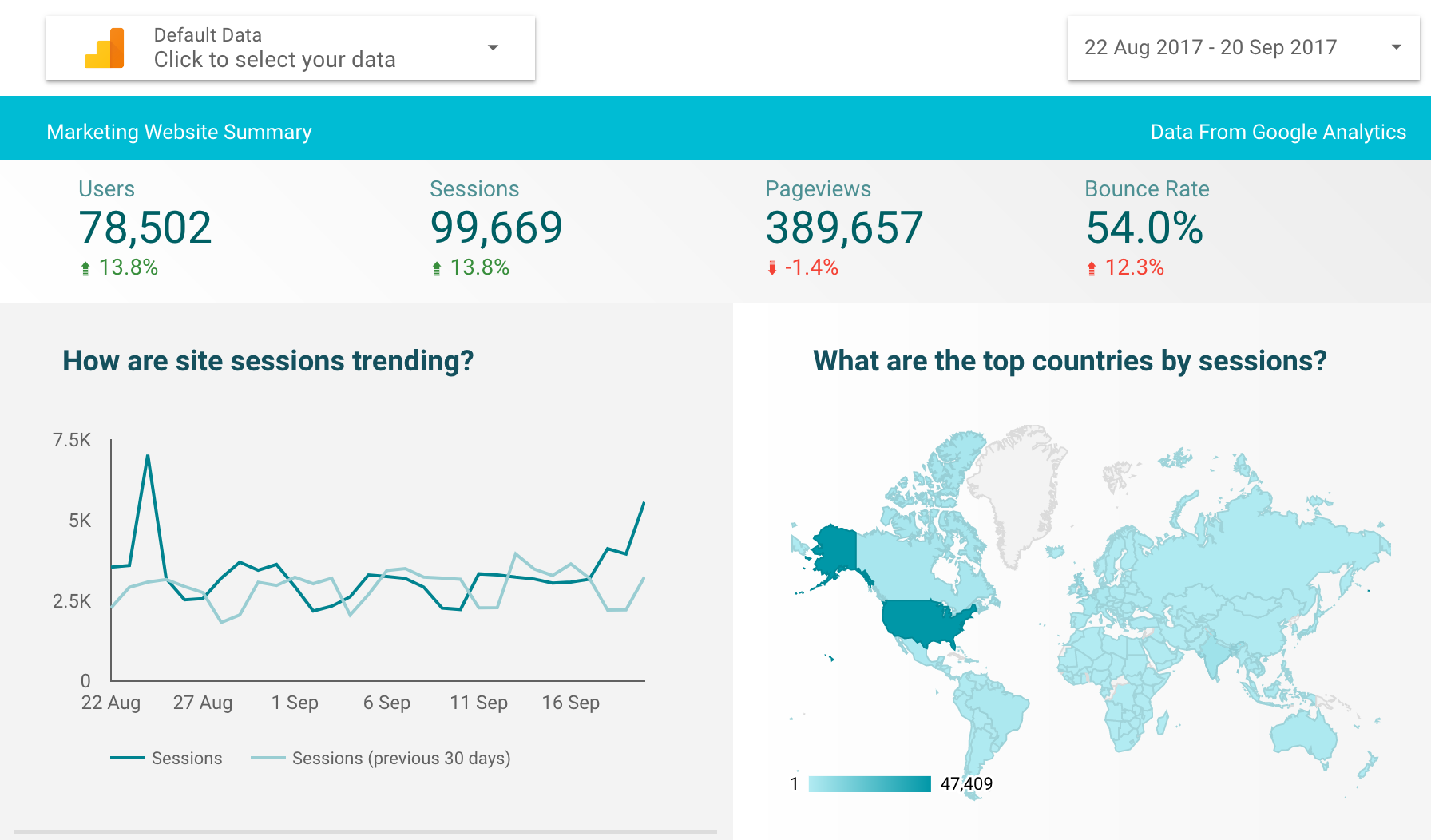As we get closer to 25 May, the deadline for the new EU data regulations (GDPR), more and more questions are being raised. One of these questions is how Google Analytics measures up to these new regulations. (If you are not familiar with the content of GDPR, here are useful …
Web Analytics
Google Data Studio Tutorial: Your Essential Site Speed Report
The speed at which users are able to access the various pages on your website can have a large impact on their experience. Users that are able to access your content quickly are more likely to engage with it and ultimately convert to a paying customer or a frequent visitor. …
Building the Perfect Digital Marketing Dashboard
With the amount of data that is associated with digital marketing, it is easy to get overwhelmed – especially for non-digital team members. It is therefore becoming increasingly important to visualize this data in an easily readable way that everyone is able to understand. The Digital Marketing Dashboard! Before we …
Getting Started with YouTube Analytics
I really do not need to start this blog post off with a description of YouTube. Everyone knows what YouTube is and how it functions. From cat videos to branded content to teen-vlogging, everyone has some exposure to the world’s most famous video platform. I am sure anyone reading this …
Three Online Marketing Dashboards You Need in Google Data Studio
Earlier this year Google announced an unrestricted free version of their reporting and visualization tool, Google Data Studio. Data Studio allows you to create informative and attractive reports from your data. These reports can easily be built and customized from a growing set of data sources. In this blog we …
How to Create Your First Report in Google Data Studio
Google Data Studio is Google’s new data reporting and visualization tool. It allows you to build beautiful reports to show data from several different sources. This data can be displayed using a large set of graphs, charts, tables and other visualization elements. In this post we will show you how …
How to Test Your Analytics Setup in 3 Steps
Whether you are creating a new analytics implementation or trying to solve a problem with an existing one; testing and debugging is a vital part of the digital analytics process. It can be difficult at times to do this testing using just your analytics tool. Normal traffic to your site …
Are you Ready for the EU’s New Data Protection Regulations?
What Are the New Data Protection Regulations? The European Union is soon to enact new regulations that govern what data you can collect about your customers and how you can use it. This legislation is called the General Data Protection Regulation or GDPR. Of course, as the name implies, the …
Flieg Ringo, flieg! – A new Web Analytics setup for ZVV
For those who may not know; Ringo, the penguin, helps teach schoolchildren in Zurich about the public transport system. Ringo, being a penguin, is unable to fly. He needs public transport to help him get from place to place. We at Amazee Metrics, in an effort to help Ringo and …
How to Create Content Groupings in Google Analytics
Content Grouping in Google Analytics is used to reflect the logical structure of your site. It is typically used to compare and aggregate data within groups you create. It also helps in analysis of your data, as you do not have to deal with messy URL’s, when you try and …
New Autotrack for Google Analytics
If you are using Google Analytics out of the box, without additional event tracking codes or custom configurations, you are missing out on a wealth of good data about what users are doing on your website. Unfortunately, many Google Analytics users do not have the technical know-how or the resources …
Web Analytics Tips: Tag Your Campaigns To Correctly Measure Marketing Performance
Correctly tagging your marketing campaigns is the most important step you can take to measure marketing performance, after setting up a web analytics tool. Without good campaign tagging, marketers cannot know the real impact of their efforts. If you want to understand how much traffic came to your website from …




















